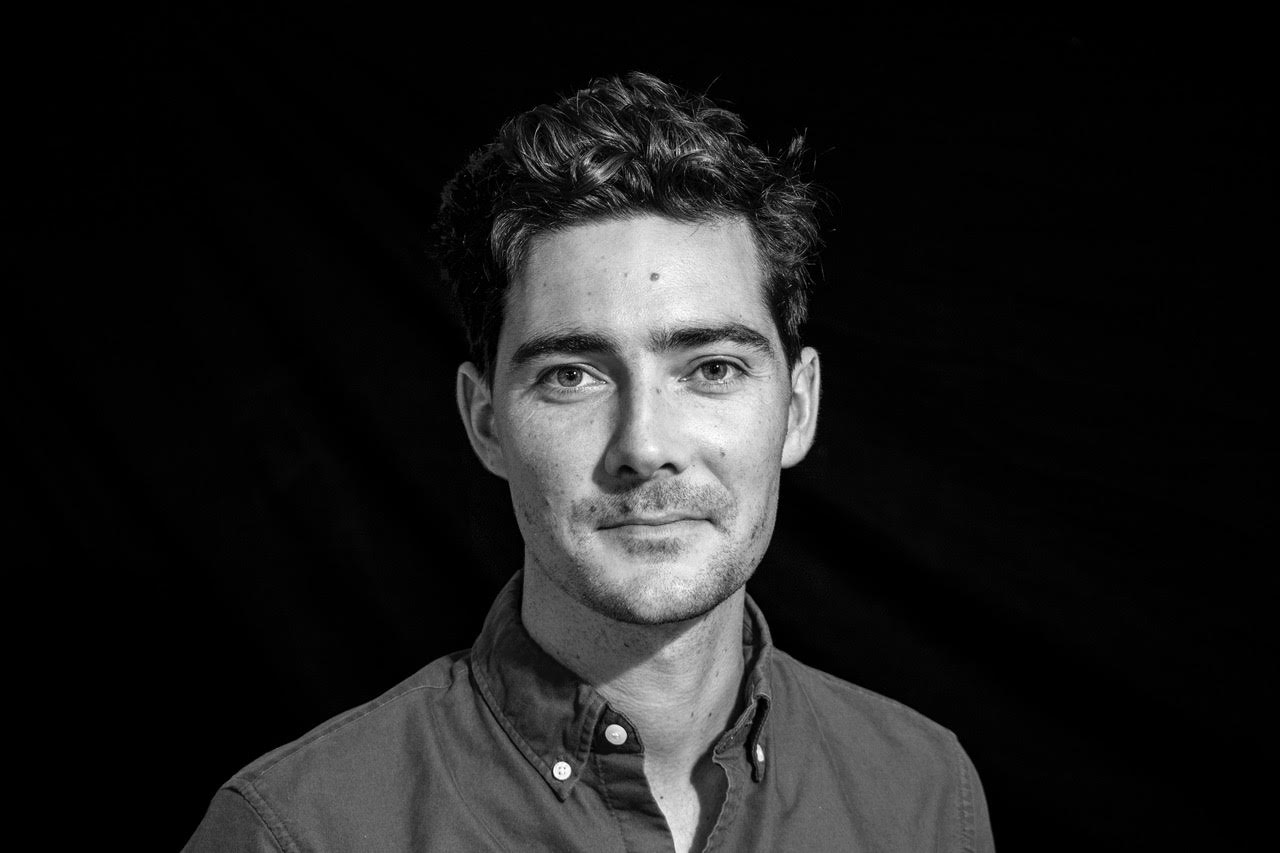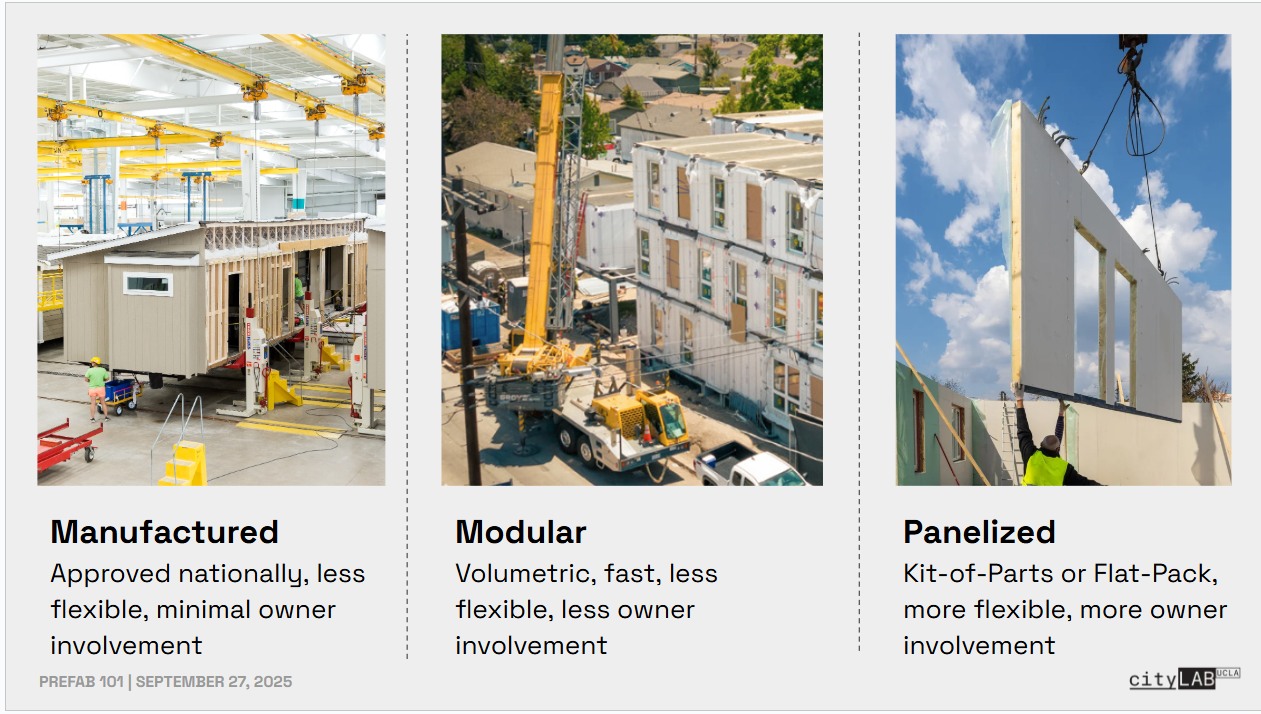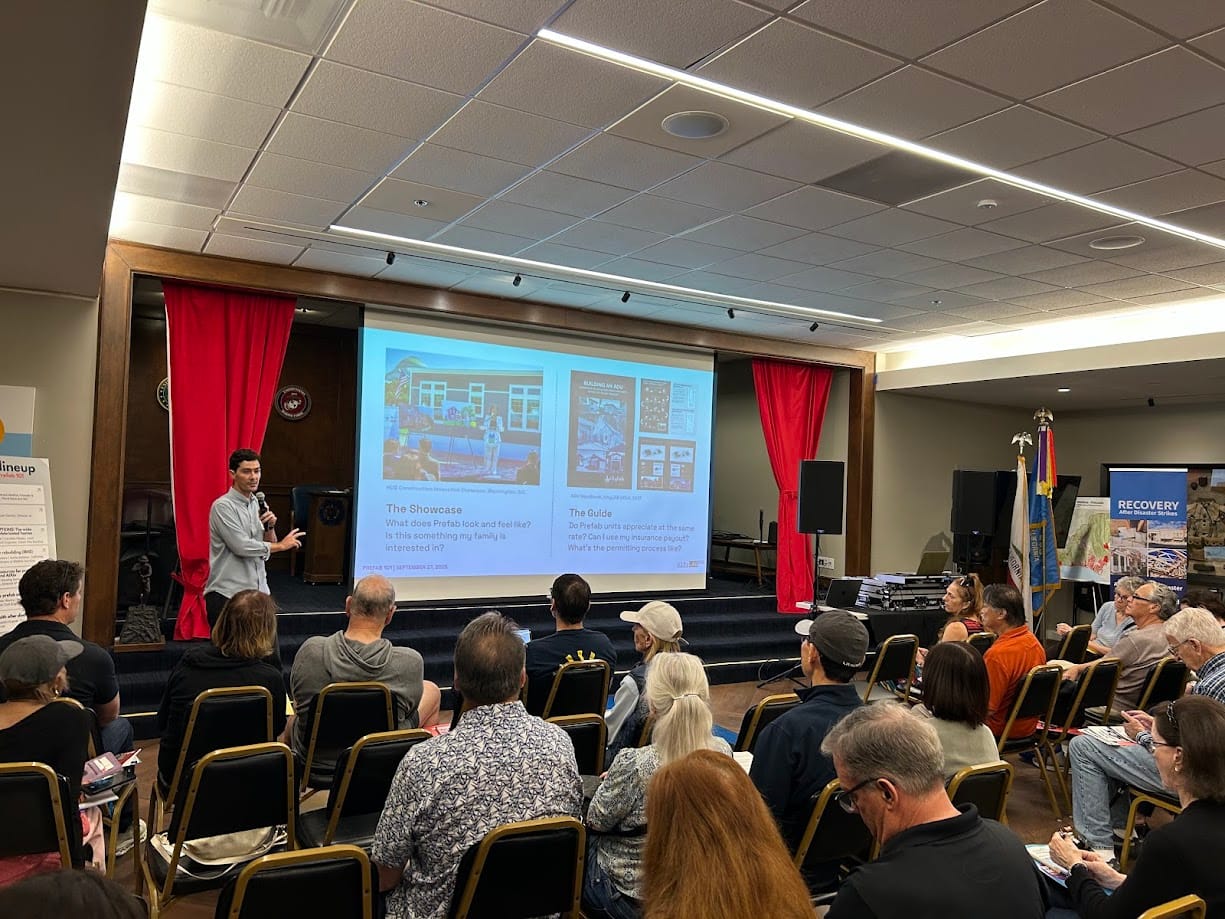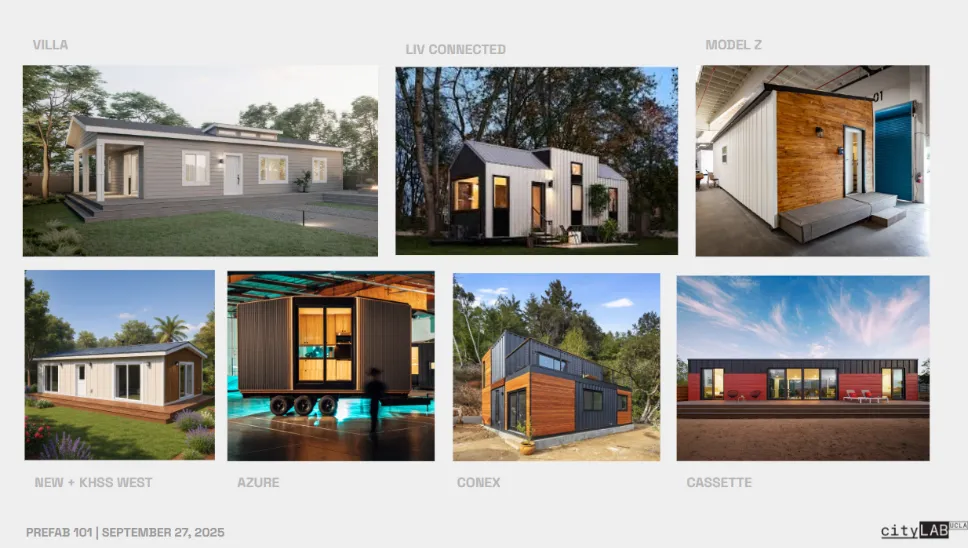Nine months out from the devastating LA wildfires, families are still navigating the complex and prolonged process of rebuilding and returning to their homes. cityLAB, a research center that’s part of UCLA’s Architecture and Urban Design Department, is helping residents explore an innovative, accessible, and often affordable option: prefab housing.
Founded in 2006 by architecture professor Dana Cuff, cityLAB researches and designs innovative solutions to build more sustainable communities—in LA and beyond. More than just a think tank, they also have a history of impacting policy: Cuff co-wrote California legislations enabling ADUs and housing on schoolyards and on district-owned property.
This past weekend, cityLAB played an integral role in Lotus Rising LA’s Rebuild Ready: Prefab 101 event. On September 27, community members and local leaders came together to help explain how prefab works, answer pressing questions, and meet with prefab builders to consider their options.
LA County Supervisor Kathryn Barger’s office has supported the use of alternative housing options, including prefab, as an efficient rebuilding solution, but there are a lot of questions on the process: What does a prefab home look like? Can I use my insurance payout? Is the permitting process the same? According to Ryan Conroy, Associate Director of Architecture for cityLAB and board member of the LA Forum for Architecture and Urban Design, “With loss of use funding [expiring] in 18 months or less, these questions need to be answered sooner than later. We think [prefab] may provide a stable pathway back to your lot, so that's why we're motivated to educate folks about it.”

We spoke with Conroy to learn more about the benefits—and misconceptions—of prefab housing, how cityLAB is connecting residents with valuable resources, and next steps for those considering a path to prefab.
Can you provide a quick breakdown of what prefab housing is?
Prefab is this big umbrella term: It just means the building is done offsite—whether that’s panels, modules, or full homes. Prefab can mean a home that's built out of the exact same materials [as on-site builds] with wood studs, just in a factory and then assembled on site. It can also come from startup companies that build homes very differently from site-built construction.
There are some really beautiful options on the market. Some arrive in one big box from a factory. Some are hybrid systems like cross-laminated timber decking on wood-framed walls that I would say would rival the warmth and architecture of any site-built work. We’re putting all these solutions out there. We're just trying to arm Altadenans with a better sense of what their options are and be able to navigate this process.

Why is prefab such a valuable option for wildfire victims?
Folks are having some very difficult conversations around what they can afford right now. And there's a rationale to working with something that has a fixed cost. That's where I think prefab makes a lot of sense. There's also an element of decision fatigue where, if you're trying to put your life back together and your kids are in a new school, you don't need to project manage the whole rebuilding process. You have bigger problems.
We’re seeing folks with their back against the wall and lots going up for sale. If [prefab] is a last resort or outside-the-box solution, then we need to deliver this information quickly.
What are some other key benefits of prefab construction?
Since prefab homes are built offsite, they have to be even stronger than site-built construction because they have to rattle down from British Columbia or Riverside or Texas. So often they are over-engineered for strength.
They have to go through the same rigorous approval process to ensure they’re seismically stable, let's say for earthquakes. And in terms of fire safety, many of them use the same class-A roofing and fire-resistant siding as site-built work. Since they’re often boxy, they also inherently skirt a lot of the architectural obstacles, like eaves and reentrant corners, that tend to catch embers and would pose a problem in another fire event.
What are the main questions and concerns you’re hearing from families trying to rebuild?
I think the big questions are around appreciation and financing. The first being, ‘Okay, this helps me now, but what does my exit look like? What sort of generational wealth am I building for my family by investing in a prefab unit now?’ And we are building a Prefab Handbook to answer those questions. It's not definitive, but there are positive studies showing that offsite construction appreciates similarly to site-built construction.
At the Rebuild Ready event, we also joined United Policyholders to answer questions like: How easily can I use my insurance payout on a prefab home? Does it matter what type of prefab home it is? Can I refinance my loan? What are the pathways towards approval for something built offsite? Does it have to comply with, say, Altadena’s community design standards?

How do you address the stigma around prefab housing?
I think folks arrive at this conversation with a healthy amount of bias. Prefab has a reputation that it has to confront, like this idea that it only means a double-wide trailer. Folks who had ruled this out as an option—because maybe they didn't understand the nuances of offsite construction—might revisit it. That's my goal. All we're trying to do is help everybody understand what it is they need a little more clearly and what might get them there.
Can you share more about cityLAB’s upcoming Prefab Showcase?
For the Prefab Showcase this fall, we’re bringing seven prefab units to Altadena, standing them up for a month, turning the lights on, and letting community members see for themselves what prefab looks like and whether it could work for their needs. We’ve partnered with CORE, the Community Organized Relief Effort organization, to use their lot temporarily for this event. We’re also bringing vendors on site to help educate folks on their many options.
We’re working with a big team, including LA4LA and Restore Neighborhoods LA, a housing nonprofit and general contractor. Wells Fargo and the California Community Foundation funded the effort. And we’re working with local groups like Community Women Vital Voices to help get us in front of Altadenans so we can tailor this experience to their questions and needs.
What are the next steps for families considering prefab housing options?
We'll be advertising the Prefab Showcase as it goes live and launching a new corner of our website to help redirect folks to more resources. We’ll also be sharing our Prefab Handbook this fall with more information to try and answer those big questions around permitting pathways, insurance, how to work with LA County, and how to find prefab models that might work for you.
For more information
Learn more about prefab and rebuilding options with these resources:
- California Department of HCD: Manufactured Housing
- Manufactured Housing Permits & Inspections
- cityLAB events
- LA County Recovers
- Restore Neighborhoods LA
- United Policyholders
Disclaimer: The content shared in our blog is for informational purposes only and should not be considered legal, medical, or financial advice. Please consult with a qualified professional for guidance specific to your situation.

